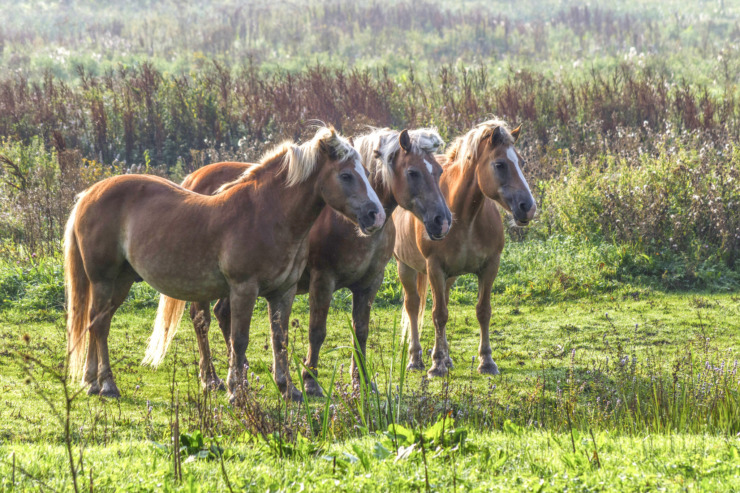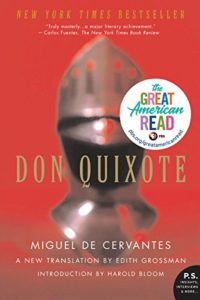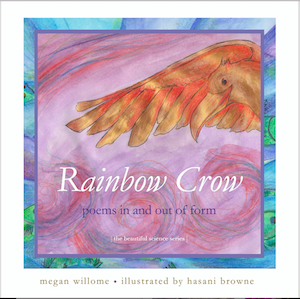Don Quixote: Madness is the Coin
I stood in line behind Cervantes at the office supply store. No, not that Cervantes. But like the man who wrote Don Quixote, or perhaps I should say, like Don Quixote himself, this Cervantes was exceedingly polite. Dare I say chivalrous. He was on a mission—one that neither I nor the lone overworked clerk understood. Cervantes indicated that under ordinary circumstances, he would let me go first, but in this case, his mission took precedence. He also earnestly asked me to sign his document. Against my better judgement, I did. How could I tell Cervantes no? Even if he was a little mad.
Hope looks a lot like madness. It envisions a reality no one else can see. How other people respond to a person who builds their life around such wild hope is the subject of Miguel de Cervante’s Don Quixote, published in two parts, in 1605 and 1615. But madness is also the coin that allows Quixote to bring us delight and pleasure, even in his worst moments.
I’ve been reading Don Quixote for a year with the dudes at Overdue. I knew Cervantes was a contemporary of Shakespeare. I knew the story is considered the first modern novel. I didn’t realize how contemporary it remains. Among the dozens of intellectual properties referenced in Overdue’s podcast series are Popeye, The Simpsons, Looney Tunes, The Secret, Community, Twilight fanfiction, “Hotel California,” and numerous video games. The long list proves that The Man of La Mancha, the Knight of the Sorrowful Face, Alonso Quixano the Good, is still relevant.
At the end of the story, his frenemy, Sansón Carrasco, writes of him:
He did not esteem the world;
He was the frightening threat
To the world, in this respect,
For it was his great good fortune
To live a madman, and die sane.
The book is funny. The book is sometimes gross. It’s full of cartoon violence. It has stories within stories, with R-rated material. Don Quixote is ferocious when his books or ideas are criticized, or when someone insults his beloved Dulcinea—who does not exist and who never did. His one follower is his squire, Sancho Panza, who for most of the book is only in it to be awarded a governorship of an ínsula (that is, until he gets it).
We’re not in Don Quixote’s head but in the perspectives of this crowd of people around him—priests, barbers, shepherds, innkeepers, pirates, poets, convicts, rich, poor, sane and crazy—each, by turns laughing at him and marveling at him. If he’s a madman, sure, he’s at a 19 on a scale of 10, but everyone else in the story is at least a 5. And every one of them sees himself or herself as the hero of their own story, just as Don Quixote does. Just as we all do.
Don Quixote’s character changes from book 1 to book 2. After Cervantes published the original story, someone else wrote an unauthorized sequel, which Overdue jokingly referred to as “Dan Quixote.” So Cervantes wrote the “Second Part of the Ingenious Gentleman Don Quixote of La Mancha,” in which our hero encounters people who have read the real first book and/or the fake second one. The real second book includes a lot of people pranking Don Quixote and Sancho to see if they are like the characters who share their names. Is Quixote really a knight errant? Is Sancho really a mangler of proverbs who is surprisingly wise? Let’s throw a bag of cats through the window of their bedroom and see what happens. (Yes, that actually happens.)
Through all the adventures of “such a knight errant and so erring a squire,” Don Quixote maintains his vision of the world, one controlled by enchanters—where inns are castles, windmills are giants, and puppets are not to be trusted.
But like all good heroes, they change as a result of their adventures. When the duke and duchess trick the two into riding a fake flying horse, Sancho believes the impossible and gives details of his ascent to the skies. When Don Quixote is lowered into the actual Cave of Montesinos, he is never quite sure if what happened there was real or not.
But the stories of chivalrous knights? He is certain those are 100 percent real. Quixote explains it to one man like this:
Because wanting to convince anyone that there was no Amadís in the world or any of the adventuring knights who fill the histories, is the same as trying to persuade that the sun does not shine, ice is not cold, and the earth bears no crops. […] If that is a lie, it must also be true that there was no Hector, no Achilles, no Trojan War, no Twelve Peers of France, no King Arthur of England who was transformed into a crow and whose return is awaited in his kingdom to this day.”
If those stories are not true, then you might as well try to convince me there is no Kristin, no Jane, no Jackie, no Sancho Panza, and no Don Quixote. The madness that makes me believe in stories is the coin which I never tire of spending. There is no more hopeful act than to open a new book and read these magical words: Chapter 1.
Perhaps I am in error. I’m okay with that.
There are many who are errant,” said Sancho.
“Many,” responded Don Quixote, “but few who deserve to be called knights.”
Your Turn
1. Who is a character in a book that you—shhh—secretly hope might be real?
2. This is my second time to read Don Quixote (the first time was in high school). What high school classic have you returned to?
3. Share your April pages. Sliced, started, and abandoned are all fair game.
April’s Pages
Poetry
When the Moon Is Full: A Lunar Year, by Penny Pollock, illus. Mary Azarian
Imperfect, poems about mistakes: an anthology for middle schoolers, edit. Tabatha Yeatts
Picture Books and Early Readers
The Pancake Boy: An Old Norwegian Folk Tale, by Lorinda Bryan Cauley
The Black Bull of Norroway: A Scottish Tale, by Charlotte Huck, illus. Anita Lobel
Sing with Me: The Story of Selena Quintanilla, by Diana López, illus. Teresa Martinez
Middle Grade and YA
The Beatryce Prophecy, by Kate DiCamillo, illus. Sophie Blackall
Babe, by Dick King-Smith (Join us for Children’s Book Club on Friday, May 13!)
Grownups
Boomtown, by Sam Anderson
Don Quixote, by Miguel de Cervantes, trans. Edith Grossman (her translation is very readable)
Made Progress
Tess of the D’Urbervilles, by Thomas Hardy, new edition with notes by Karen Swallow Prior
Photo by Paul van de Velde, Creative Commons, via Flickr. Post by Megan Willome.
Browse more book reviews with Perspective
“Megan Willome has captured the essence of crow in this delightful children’s collection. Not only do the poems introduce the reader to the unusual habits and nature of this bird, but also different forms of poetry as well.”
—Michelle Ortega, poet and children’s physical therapist
- Perspective: The Two, The Only: Calvin and Hobbes - December 16, 2022
- Children’s Book Club: A Very Haunted Christmas - December 9, 2022
- By Heart: ‘The night is darkening round me’ by Emily Brontë - December 2, 2022



Glynn says
I’ve read Don Quixote twice, the first time as a high school senior (and it was the unabridged version) and the second time on vacation at the beach when I was 40. My high school English teacher said you should read it three times in your life — youth, middle age, and old age. I’m planning the third reading when I get old, many years from now.
High school classics I’ve returned to include Ethan Frome, David Copperfield, Great Expectations, several works by Willa Cather, T.S. Eliot’s poetry, Shakespeare’s Julius Caesar, Spoon River Anthology, and quite a few others.
April reading:
Mystery
Murder at the Spring Ball by Benedict Brown
The Haunted Hotel by Wilkie Collins
A Body at a Boarding School by Benedict Brown
Or Else by Joe Hart
Non-fiction
The Stasi Poetry Circle by Philip Hermann
The Real Horse Soldiers by Timothy Smith
We the Fallen People: The Founders and the Future of American Democracy by Robert McKenzie
Poetry
Rainbow Crow by Megan Willome (destined to be a classic)
Tornado Drill by Dave Malone
Marrow of Summer by Andrea Potos
Nature by Jesse LoVasco
Fiction
Water from My Heart by Charles Martin
After She Left by Claire Amarti
Above the Rain by Victor del Arbol
A Lost Lady by Willa Cather (speaking of classics)
Megan Willome says
Aw, shucks. Thanks, Glynn.
This counts for my reading #2 then, from a person smack dab in middle age. This time it seemed less optimistic, especially as the story progressed. And yet I did not leave the book feeling sad.
Glynn says
My high school English teacher’s point was the text doesn’t change, but we do. When I read it in high school, I was struck by the idealism of the title character. In middle age, I think I finally understood what “quixotic” meant. I’m actually looking forward to how I might respond when I read it for the third time.
L.L. Barkat says
Megan!
This is fabulous.
I’m not sure I’d make it through the actual DQ book/s (I think I tried once), but this post is good enough for me. And totally worth a few re-reads. 🙂
Thank you for such a fantastic summary with great insights.
Megan Willome says
Thanks so much!
It really helped to read along with a podcast. I do that often when a book feels overwhelming. The Overdue guys are goofy but insightful, a combo that worked perfectly for this 12-month “Jagged Little Mill” jaunt through Spain.
And any creator who thinks they invented story that’s meta? Cervantes has them beat by 500 years.
L.L. Barkat says
Ha! Someone needs to paste that meta announcement somewhere 🙂